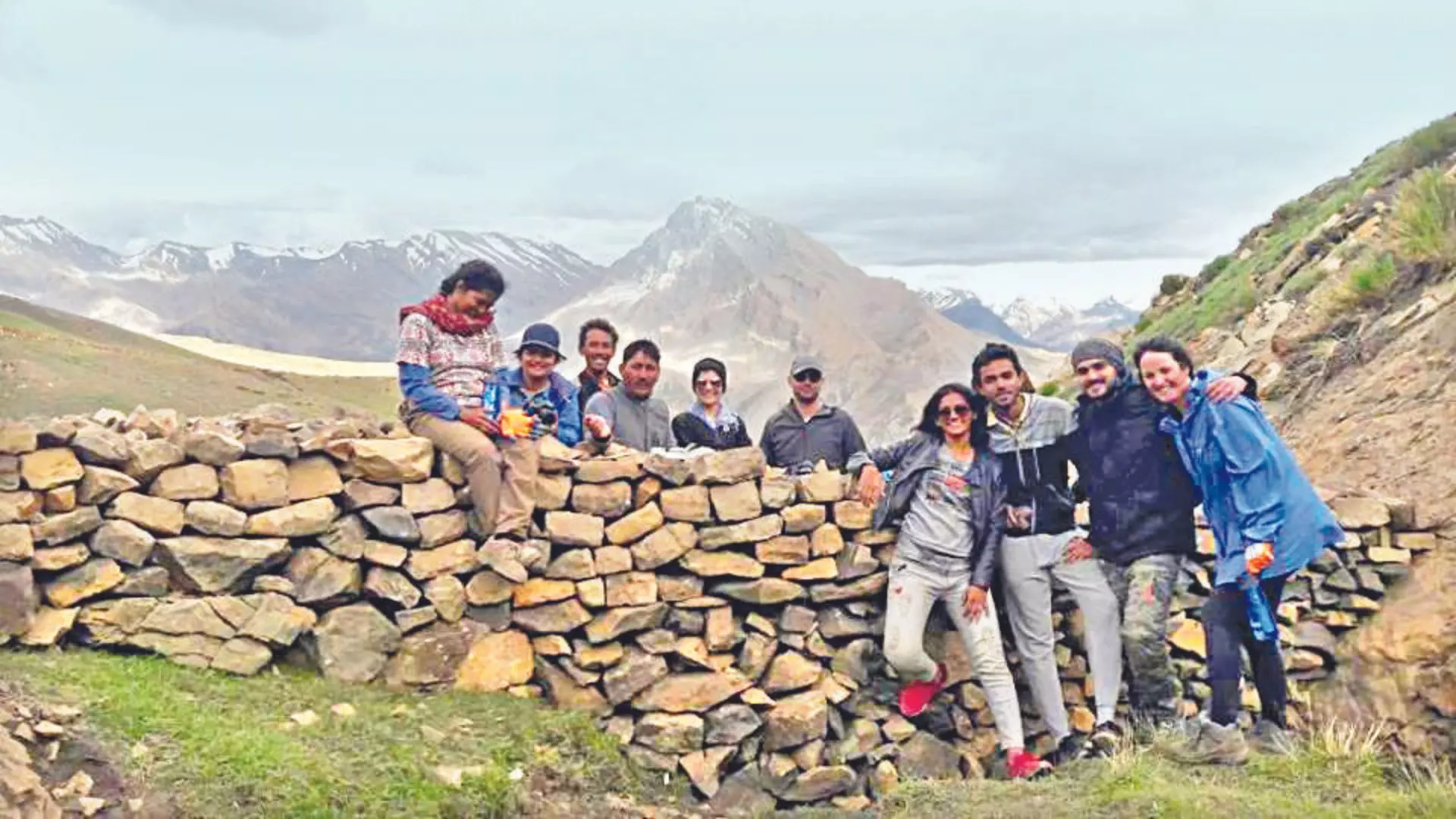From Backpack To Giveback

Beyond the predictable postcards of Taj Mahal and The Gateway of India, travel enthusiasts, have embarked on journeys of ‘purpose’ – from teaching English to village children from marginalised communities in Rajasthan to rainwater harvesting in Auroville, Tamil Nadu to building greenhouses and artificial glaciers in Himachal Pradesh, every step and project is a brushstroke in a larger portrait of empowerment and cultural exchange. A culture that is being widely celebrated by the Gen-Z to “make a change” in society.
Serving Society
Voluntourism (also known as Volunteer Tourism) is an altruistic mode of travelling wherein travellers look for meaningful experiences to donate their time and skills to help those in need. The phenomenon becomes a conduit for understanding India’s complexities, forging connections that go beyond mere tourism to leave a lasting impact on both travellers and the communities they touch. It manifests through an intention of wanting to give back to society and well, to earn an extra golden star in your college resume. For over two decades, Spiti Ecosphere has been a leading example of voluntourism, demonstrating its symbiotic relationship with social impact in the Spiti Valley, Himachal Pradesh. This social enterprise offers a diverse array of opportunities and programmes for travel volunteers, from providing education to students at local nunneries to agricultural projects like Farming Feats, which integrate volunteers into farming and herding traditions. The volunteers help with ambitious projects such as building greenhouses and artificial glaciers. These efforts are pivotal in combating nutritional deficiencies and ensuring water security in this remote and underserved region. Many medical care professionals volunteer in the Save Smiles campaign to provide essential dental care to the community.
Volunteers immerse themselves in local culture through the “Live Like a Local” and “Run a Café” campaigns, where they assist in local cafes, sell produce, and interact closely with the community.
Ishita Khanna, Founder of Spiti Ecosphere, says, “Volun-teers at Spiti Ecosphere have helped build over 150 greenhouses, and artificial glaciers. These structures play a crucial role in providing water access to villages in Spiti Valley, especially during the dry months. Each glacier not only supports local agriculture but also ensures sustainable water management, mitigating the impact of climate change on the region's water resources.”
Skill Sharing
The Sambhali Trust offers opportunities for volunteers to support their initiatives empowering local artisans, and women and girls of marginalised communities. Volunteers teach English, vocational skills (including technology), organise health camps, and participate in cultural exchange activities. Gopal Singh Rathore, Founder, Sambhali Trust, says, “The aim is to empower these communities to hold a pen, and not a broom. We just found voluntourism along the way.” The organisation which was originally meant to abe a teaching organisation began its journey on the roof of Rathore’s home. It was years later when Ashley, a traveller from England arrived at Rathore’s guest house and decided he wanted to teach the woman. Thanks to voluntourism, Ashley convinced Rathore to register his NGO.
A German traveller volunteered and designed the NGO’s website for Rathore and other local artisans.
Joy of Giving
Many Gen-Z are tech savvy and indulge in voluntourism. Rathore says, “Volunteers trained these women and girls with computer skills and taught them on how to operate softwares. They sent emails to Microsoft and Google on our behalf. Our students got free access to all the softwares.”
The volunteers of Sambhali initiated “Church Bazaars” in churches and streets with displays of handicrafts and artefacts made by local artisans. The volunteers helped the artisans draft brochures. They printed and translated them into French, Italian, Dutch and English to gain traction globally. Student volunteers from Purpan University, France successfully planted a forest in the Setrawa District. “In five years, there will be a forest on the barren land. I can’t even imagine the flora and fauna that will flourish,” Rathore says.
The voluntourists are from across the world. Khanna saw a 50:50 ratio of Indians and foreigners, a lot of them students. A majority of the voluntourists are Americans, Australians, French, Germans, and British. Many came from big universities like Stanford, Barcry, Oxford, Cambridge to volunteer. There are volunteers from NIFT, Manipal, UPSC, Dehradun, and NLUs too. Tasha Stöppler (20), a student from Germany volunteers for the marginalised communities in Rajasthan. “Mr Rathore told me before I joined, ‘Come here to learn, and not to teach’. It is only now that I understand what it means”. Harmanika Chouhan (21), a student from Jaisalmer teaches women and children at Sambhali. She chose to travel for change instead of vacationing in her break from college. Shehnaaz, a widow and mother to three children was taught how to read and write by the volunteers. Voluntourism has changed her life, “No one can call me illiterate anymore. I can sign and write in English,” she says. As a $2 billion industry, voluntourism emerges not just as one of the fastest-growing travel trends in the world but also as a transformative force in India.
Volunteers at Spiti Ecosphere have helped build over 150 greenhouses, and artificial glaciers.”— Ishita Khanna, founder, Spiti Ecosphere
The aim is to empower these communities to hold a pen, and not a broom. We just found voluntourism along the way.” — Gopal Singh Rathore, founder, Sambhali Trust

